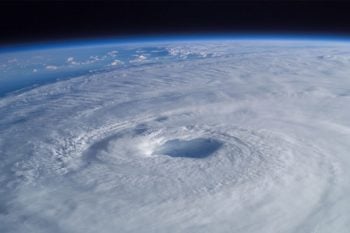Travel Advice During Hurricane or Typhoon Seasons
 The Department of State alerts U.S. citizens to the Hurricane and Typhoon Seasons in the Atlantic and Pacific Oceans, the Caribbean, and the Gulf of Mexico.Hurricane and Typhoon Season will last through November 2017, though most tropical cyclones typically develop between May and October. The National Oceanic and Atmospheric Administration (NOAA) recommends that those in hurricane and typhoon-prone regions begin preparations for the upcoming seasons now. This Travel Alert expires on December 1, 2017.
The Department of State alerts U.S. citizens to the Hurricane and Typhoon Seasons in the Atlantic and Pacific Oceans, the Caribbean, and the Gulf of Mexico.Hurricane and Typhoon Season will last through November 2017, though most tropical cyclones typically develop between May and October. The National Oceanic and Atmospheric Administration (NOAA) recommends that those in hurricane and typhoon-prone regions begin preparations for the upcoming seasons now. This Travel Alert expires on December 1, 2017.
Hurricanes in the Gulf of Mexico and Caribbean
The Atlantic Basin, including the Gulf of Mexico and the Caribbean Sea: Hurricane Season in the Atlantic began June 1. The National Oceanic and Atmospheric Administration’s (NOAA) Climate Prediction Center expects a 45 percent chance of an above-normal season, a 35 percent chance of a near-normal season, and only a 20 percent chance of a below-normal season. NOAA predicts a 70 percent chance of 11 to 17 named storms (winds of 39 mph or higher), of those, five to nine are predicted to strengthen to a hurricane (winds of 74 mph or higher) and two to four are expected to become major hurricanes (with winds of 111 mph or higher, ranking Category 3, 4 or 5 on the Saffir-Simpson Hurricane Wind Scale). NOAA recommends that those in hurricane-prone regions begin preparations for the upcoming season now.
Hurricane Season in the Pacific Ocean
The Eastern Pacific: Hurricane season in the Eastern Pacific began on May 15, 2017. NOAA expects a near- or above-normal season, with a 40 percent chance of an above-normal season, a 40 percent chance of a near-normal season, and a 20 percent chance of a below-normal season. NOAA predicts a 70 percent chance of 14 to 20 named storms, of which six to eleven are expected to become hurricane strength. Of those, three to seven are expected to become major hurricanes (Category 3, 4, or 5 on the Saffir-Simpson Hurricane Wind Scale).
Western and Central Pacific: Typhoon season in the Western and Central Pacific runs from June 1 to November 30. NOAA’s Central Pacific Hurricane Center (CPHC) predicts an 80 percent chance of a near or above normal season. CPHC expects five to eight tropical cyclones to affect the central Pacific this season. For information on typhoon warnings, please consult the Joint Typhoon Warning Center in Honolulu, the National Weather Service’s Central Pacific Hurricane Center, and the Regional Specialized Meteorological Center (RSMC) Tokyo – Typhoon Center.
In the past, travelers were forced to delay travel (including return travel to their home country) due to infrastructure damage to airports and limited flight availability. If you are planning to travel to regions of the world often affected by hurricanes, typhoons, or cyclones, visit our Tropical Storm Season – Know Before You Go page for more information about the potential dangers and inconveniences associated with your travel before finalizing plans.
If you live in or are traveling to storm-prone regions, prepare by organizing a kit in a waterproof container that includes a supply of bottled water, non-perishable food items, a battery-powered or hand-crank radio, any medications taken regularly, and vital documents, especially your passport and other identification. Emergency shelters often provide scant resources and may have limited medical and food supplies. For additional tips, visit NOAA and the Federal Emergency Management Agency (FEMA).
To prepare yourself before you go:
Read Travel Insurance During Hurricane Season or see the State Department’s travel website for the Worldwide Caution, Travel Warnings, and learn about Travel Alerts. Enroll in the Smart Traveler Enrollment Program (STEP) to receive security messages and make it easier to locate you in an emergency. Call 1-888-407-4747 toll-free in the United States and Canada or 1-202-501-4444 from other countries from 8:00 a.m. to 8:00 p.m. Eastern Standard Time, Monday through Friday (except U.S. federal holidays).
